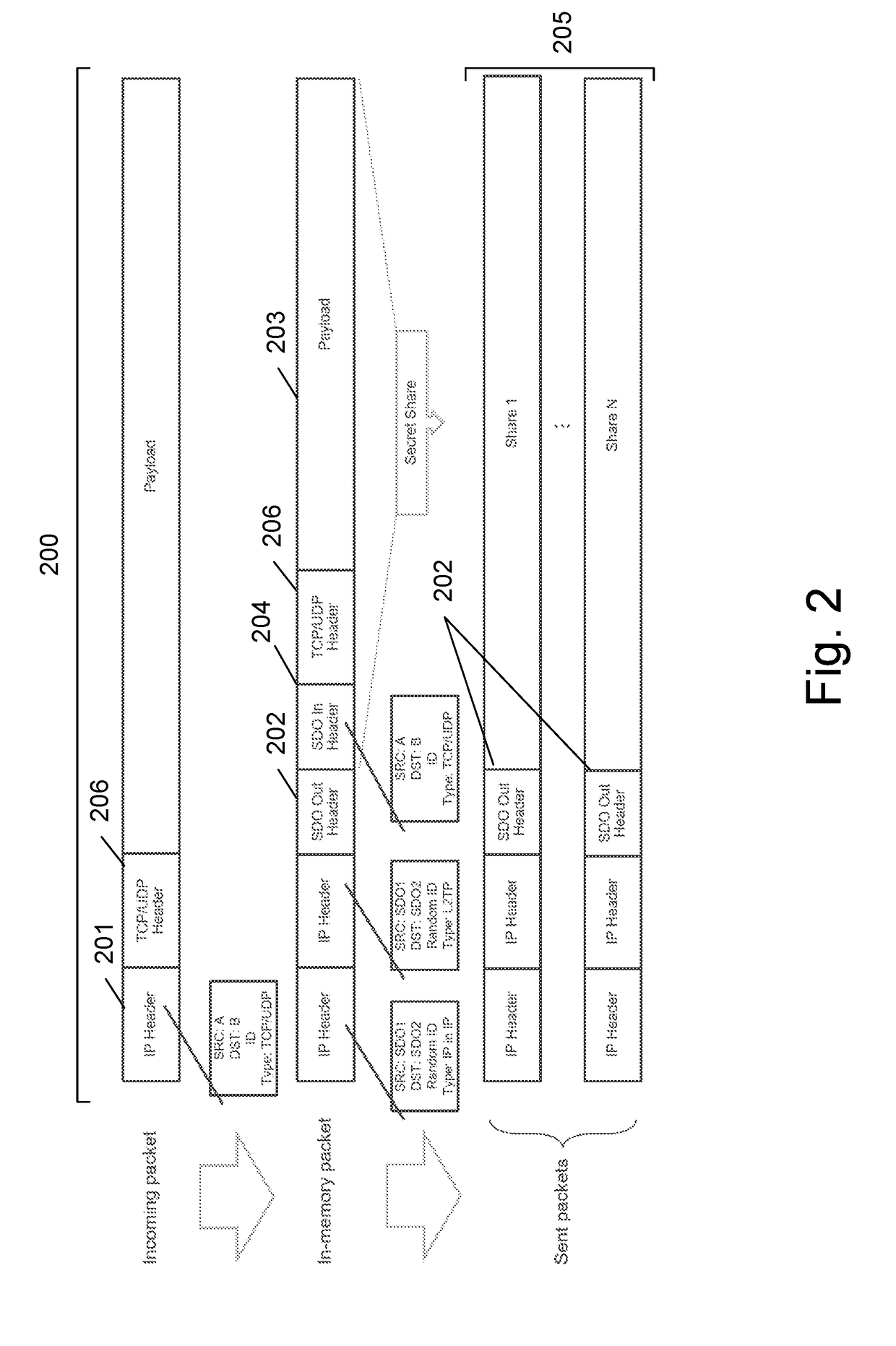Method and system for authenticating and preserving the integrity of communication, secured by secret sharing
a communication integrity and secret sharing technology, applied in the field of communication networks, can solve the problems of data corruption, data backup paths being down for maintenance purposes, and difficult to detect transmission data corruption
- Summary
- Abstract
- Description
- Claims
- Application Information
AI Technical Summary
Benefits of technology
Problems solved by technology
Method used
Image
Examples
example
[0132]If two secret shares are sent for a polynomial of degree 3 given by:
P(x)=a3x3+a2x2+a1x+a0
where a0 is the secret (which may be XORed), then four points (x;y) on the polynomial are needed to reveal the coefficients (and the XORed secret). Then, if there is an agreed upon phantom point (x=7;y=10) and phantom coefficient a2=3 in both sides of the sender and the receiver, and only two secret shares (points on the polynomial) are sent by the sender, only the receiver who has the phantom point (x=7;y=10) and phantom coefficient a2=3 will be able to reveal the polynomial P(x) and the secret. A sniffer who does not have the missing point (7;10) and coefficient value (3) will not be able to reveal them.
[0133]Therefore, only the sender and the receiver (the endpoints) who have the initial common secret (that can serve as a common seed for a pseudo random sequence) will be able to decrypt messages exchanged between them. Any other entity which sniffs the transmission paths for time limit...
PUM
 Login to View More
Login to View More Abstract
Description
Claims
Application Information
 Login to View More
Login to View More - R&D
- Intellectual Property
- Life Sciences
- Materials
- Tech Scout
- Unparalleled Data Quality
- Higher Quality Content
- 60% Fewer Hallucinations
Browse by: Latest US Patents, China's latest patents, Technical Efficacy Thesaurus, Application Domain, Technology Topic, Popular Technical Reports.
© 2025 PatSnap. All rights reserved.Legal|Privacy policy|Modern Slavery Act Transparency Statement|Sitemap|About US| Contact US: help@patsnap.com



